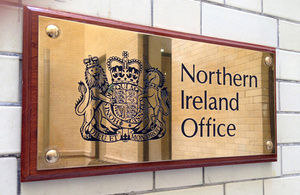Community testing to help lift restrictions in highest tiers
- Government sets out new programme to help provide route to move down tier levels for highest risk areas
- Areas in tier 3 invited to apply for support for community testing to detect asymptomatic cases and drive down transmission
- Local areas will be asked to consider incentives to encourage people to take part in order to detect as many cases as possible
Details of a new community testing offer have been set out today by the Government to help local areas detect asymptomatic cases, suppress the virus and offer a route out of the toughest restrictions.
Local authorities in tier 3 areas, the highest level of restrictions, can apply for the new six-week community testing programme to complement wider local strategies to tackle the virus.
The Government will work with local authorities to identify how community testing might be used to help areas in tier 3 move down to a lower tier, whilst continuing to protect the people in those communities and the NHS.
Local authorities will determine the best way to focus testing, suppress the virus and ensure their communities benefit, with potential models including whole population testing of all non-symptomatic individuals over 11 years old, testing targeted on specific geographic areas, such as those with high prevalence, or highly targeted testing on specific locations, employment sectors, or workplaces where there is a high risk.
Local Directors of Public Health will be supported to develop approaches that work for their community, backed by national support and funding. Central government will provide operational support for the design and delivery of community testing programmes, and funding available to local authorities will be estimated based on the number of tests they aim to deliver over the 6 week programme.
Health and Social Care Secretary Matt Hancock said:
By expanding our testing to include people showing no symptoms, we are finding more positive cases more quickly and breaking chains of transmission. Up to a third of people have coronavirus without symptoms, so it is incredibly important to be testing those who could be infecting others unknowingly.
When more people come forward for regular community testing, we have a much greater chance of driving down prevalence of the virus and saving lives.
I know people in the top tiers are facing a particularly difficult time, which is why we are supporting them with mass community testing to provide a route towards lowering the level of restrictions they face.
We are committed to working with local areas to make this work for their communities and I encourage all those living in areas where community testing is offered to come forward and get tested.
The Government will also work in partnership with local authorities to develop initiatives to encourage participation, based on their knowledge of local populations and areas. Examples might include discount schemes with local businesses, partnerships with community organisations or local employers, or door knocking campaigns.
If successful, the community testing programme will be expanded into next year. Applications will be assessed on a number of factors including local infection rates, robust plans for community testing resources and other logistical and commercial considerations to ensure testing delivers the best possible value for money.
Proposals will be carefully assessed at both a local and national level and signed off by the Chief Medical Officer to ensure they are appropriate and safe and learning can be shared across the country.
This builds on the community testing pilots which are taking place in Liverpool and Merthyr Tydfil. Since the Liverpool pilot began, more than 200,000 people have been tested as part of a strategy that has helped to significantly reduce prevalence.
Community testing will make use of rapid Lateral Flow Tests which give results within an hour, and will focus on locating and suppressing asymptomatic transmission. The more cases identified and self-isolating, the quicker the control of virus transmission which is essential to help areas move down a tier.
With up to a third of individuals with coronavirus showing no symptoms, increased community testing will help identify those who are infected and infectious, but asymptomatic and unaware that they might be spreading the disease, so that they can isolate and protect others.
Anyone who tests positive, using either a Lateral Flow Test or an existing swab test, must self-isolate along with their household immediately and their contacts will be traced.
Eligible local authorities are invited to work with local liaison teams to develop plans and submit a proposal detailing their ambitions for community testing as soon as possible to roll out from now and into 2021.
The devolved administrations will be supported to roll out similar exercises with a pilot already ongoing in Merthyr Tydfil, Wales, and they will also receive their population share of testing capacity, including lateral flow testing.
The NHS COVID-19 app remains a key tool to help break chains of transmission. Inputting positive PCR test results into the app increases the number of people contact traced and the speed contact tracing happens, which helps reduce the spread of coronavirus and supports the reduction in the R number.
